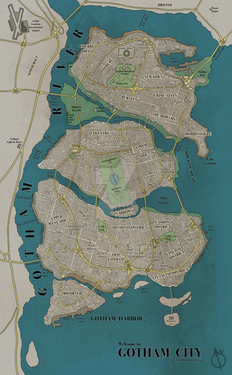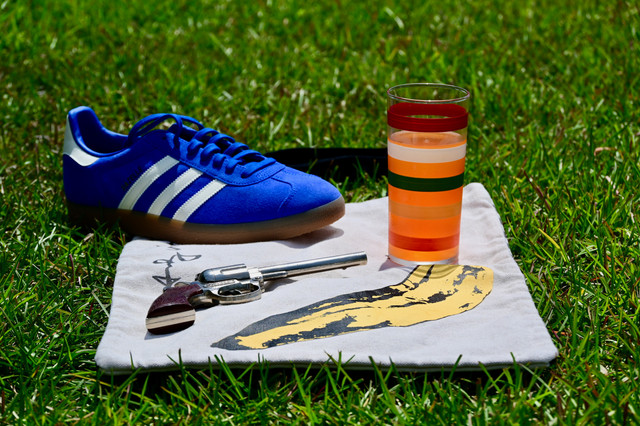HOME | DD
 wingsofwrath — Marbanian Uniforms
wingsofwrath — Marbanian Uniforms

#army #camouflage #comic #comic_book #design #fictional #helmet #rifle #soldier #uniform #marban #combat_gear #body_armour #inner_space
Published: 2015-08-13 21:39:39 +0000 UTC; Views: 18635; Favourites: 160; Downloads: 106
Redirect to original
Description
A counterpart to the plate detailing Tambrian uniforms. Some of the text used is the same for both plates, because, really, the two nations are pretty similar.A small selection of marbanian uniforms and equipment, design work for my long time comic book project "Inner Space" .
Technologically speaking, the Inner Space world is situated around our world's late 40s, but a lot of the development has been pretty schizophrenic, so we end up seeing elements that were common in our world pre-war combined with a lot of post-war developments.
First and foremost, the Marbanian army equipment has been developed in peacetime and it's effectiveness in real world combat conditions still remains to be tested - there have been a few border incidents with the neighbouring nation of Tambria, but the data gleamed from them was still pretty inconclusive.
Also, when it comes to it's fighting force Marban relies on a mixture of universal conscription (this applies to all genders) to create a large pool of reservists, as well as a small cadre of professional soldiers which form the backbone of army, accounting for the bulk of the non-commissioned officer corps as well as the upper echelons of the officer corps.
The junior officers tend to be reservists with higher education, with army training integral to most university degrees.
For the purposes of illustration, all the soldiers drawn all have the rank of "Vzvotu", the Inner space Equivalent of "Platoon Leader" or NATO OR-7. [the ranks and insignia will be discussed further in another instalment]
1a,b,c,d. The Marbanian Combat Dress Uniform consists of a lightweight tunic and trousers, steel helmet, steel body armour and combined cotton webbing and leather combat equipment.
The uniform is made out of cotton twill printed with a camouflage pattern [not directly based on any real world camo pattern, but somewhat inspired by the Norwegian and Swedish camo designs] but includes a slightly anachronistic element by having piping in the branch colour on both the tunic and trousers- in this case dark green, which was the colour for infantry. The ranks are on the upper arms and also have the branch colour as background [the branch colour and other insignia will be discussed further in a separate instalment]. The tunic is closed with heavy duty snaps concealed behind a fabric flap and includes two large pockets on the breast of the tunic, inaccessible while body armour is worn. The trousers have four pockets, two front internal ones and two large cargo pockets with with accordion folds located on the calves.
Also of note is the fact the uniform doesn't have epaulettes or shoulder straps to hold equipment on as we would use in our world, but instead use fabric crescents, also in the branch colour, like you would have found on the original uniforms of the Italian Bersaglieri, for example.
Unlike the Tambrian helmet, which is incredibly complex and designed to cover as much of the head as possible with articulated steel plates, the Marbainans instead went with a fairly small one piece metal helmet with a leather liner and neck guard. It is worn by all branches of the military. The weight is about 1.2kg, much lighter than the Tambrian design, although the metal is thicker. The helmet is based on the Dutch M28 and M.34 helmets used by the Romanian Army during WW2 as well as the later Romanian M.73 Airborne helmet.
The helmet is painted in the standard dark green of the Marbanian Army and bears on the front an ovoid metal badge depicting the coiled dragon of the Imperial Marbanian crest.
The body armour is also painted green and made out of four metal plates roughly 2.5mm thick - one to form the breastplate, two articulated ones to guard the lower abdomen and a small plate in the shape of an inverted trapezium [trapezoid, for the US readers] to guard the back. The plates are fixed to a padded cotton vest which opens at the right side and also incorporates a neck guard. The whole weighs about 4kg and can protect against shrapnel, pistol and submachine gun bullets fired from more than 10m as well as assault rifle bullets fired from more than 100m out, as long as they hit at a slight angle. It will not stop the bullet of a full size rifle. [the body armour is closely based upon the WW2 Soviet "Сталевий нагрудник" ("Stalnoi Nagrudnik", or "Steel bib") SN-42 unlike the Tambrian armour which is based on the prewar SN-38]
The combat equipment is a mix of leather straps and cotton webbing and features a leather belt with two cotton magazine pouches for two magazine each in the front, the scabbarded bayonet and a combination cotton gas mask pouch and bread bag on the left hip, an entrenching tool with removable handle in a canvas carrier at the back [ based on the British 1937 Pattern] and an aluminium water bottle with fabric camo cover on the right hip [based on the Romanian M37 and Polish Wz.37 water bottles, which both had a wide aperture compared to all the other nations].
The combat backpack also attaches to the back of the cartridge pouches and to the back of the belt via hook and loop fasteners and is designed to work as a shoulder harness. Strapped to back of the backpack there is an aluminium mess tin [based on the original German M1887 Kochgeschirr, a design so successful it is still widely used today] and around the top the shelter half/rain cape rolled around the sleeping bag.
Unlike the Tambrian shelter half which is a simple rectangle, the Marbanian shelter half also has triangular flaps at the ends to close off the completed two-man tent (also known as a "pup tent"). Like it's Tambrian counterpart it can also serve as a rain cape and there is a small bag carried inside the backpack which contains the four-section aluminium tent pole, three tent pegs and some string. [the whole lot is based on the German Bundeswehr "Zeltbahn"]
The soldier also wears lace-up leather boots, painted reddish-brown and with padded tops made of cotton twill.
The weapon is the standard Marbanian Government Type VIII Automatic Rifle in the 6HT/CA calibre (8X46mm caseless) and the magazine holds 30 rounds. [both it and it's Tambrian equivalent will be described further in another instalment]
2a,b. The Garrison/Service dress is the same tunic and trouser combo of the Combat dress, but without the helmet and body armour. it is worn with a simple leather belt that is separate from the webbing/carrier system. Also, the head should be covered at all times while outdoor.
The standard Marbanian cap is represented at (2b.) and is peaked, with collapsible ear flaps on the side and the national insignia on the front.
3. For military parades and ceremonies the Marbanian Army wears an uniform roughly similar to the normal one, but with a closer fitting cut and in the traditional Marbanian Army dark green, with collar and piping in the branch colour of the Ceremonial regiments, which is light green. The diagonal interwoven pattern on the uniform breast symbolises the higly decorative lashing which tied the gorget to the breastplate on Marbanian armour from the time of edged weapon combat. Also worn are white gloves, a white leather belt and a white leather frog for the bayonet scabbard located on the left hip. Also, the cap has a golden rather than a silver rendition of the national insignia.
The soldier is presenting arms in the Marbanian fashion, at attention and holding the rifle at a forty-five degree angle towards the left, muzzle roughly at eye level.
The rifle itself is a Marbanian Government Type IV Repeating Rifle, a bolt action rifle in 6HT/CAM (8X60mm caseless), in use with the Marbanian army by snipers and as a ceremonial rifle.
Related content
Comments: 4

Marbania seems to field more old fashioned gear.
👍: 0 ⏩: 2

Some gear is more towards the 1960s than the 1930s, but this a Dieselpunk setting more along the lines of "Royal Space Force" and Terry Gilliam's "Brazil".
👍: 0 ⏩: 1

Indeed. When I finally saw "Royal Space Force" last year I said to myself "yeah, this exactly the type of world building I'm trying to do".
There's a good reason why technology in the Inner Space world is so syncopated - they are refugees from a high-tech world who ended up here with pretty much nothing and have had to build their tech base back up from maybe Earth 17 Century level while maintaining only vague memories f how things were done first time around.
Add to that the fact they all belong to a religious order,"The True Church" (the reason they left in the first place) which has a pretty hefty say in any new technological development and the fact there are certain resources which do not exist in this world, such as a source for natural rubber, and you are just starting to see the difficulties they faced...
👍: 0 ⏩: 0

In a way. Some features of the Marbanian field gear are in fact more advanced, such as integral knee pads (considering I am currently laid up at home because of a displaced kneecap suffered during a WW2 reenactment a few weeks ago, I know exactly how important those are).
On the other hand, a lot of other features are, as you say, more "old fashioned", to reflect the fact the whole Marbanian society is a tad more conservative than the Tambrian one. I tried to make this clear in most of their equipment, be it uniforms, artillery, tanks, etc, and I'm glad I succeeded.
👍: 0 ⏩: 0

























